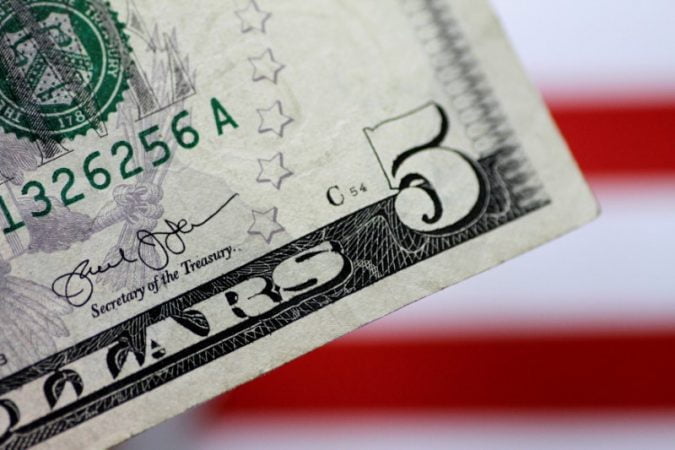
US dollar soared: It’s a problem for the whole world
(ORDO NEWS) — Since the beginning of 2022, the US dollar has grown by 10% compared to other major currencies, but this can only please American tourists abroad, writes CNN. The author of the article explains how this threatens countries with more modest economies.
This year has been a very good year for the US dollar. Great news for American tourists traveling in Europe, but for virtually the rest of the world, this does not bode well.
Since the beginning of 2022, the dollar has appreciated more than 10% against other major currencies, approaching the highest levels in the last 20 years, as investors, worried about the prospect of a global recession, began to invest in the US currency, considered the most reliable asset in turbulent times. The attractiveness of the dollar was also facilitated by the aggressive policy of the US Federal Reserve System, which raises the key rate in the fight against powerful inflation. This makes American investments more profitable because they now promise higher returns.
American tourists will probably love that an evening walk through the streets of Rome, which not so long ago cost them $100, will now cost them an average of $80. Meanwhile, for international companies and foreign governments, a strong dollar does not bode well.
Approximately half of all world trade is carried out in US currency, which means that manufacturers and small businesses that depend on imported goods will have rising costs. The governments of those countries that pay their debts in dollars can also have problems, especially if their foreign exchange reserves are reduced.
A stronger dollar is already hurting some particularly vulnerable economies.
The shortage of American currency in Sri Lanka was one of the factors that provoked the country’s worst economic crisis, which resulted in the resignation of the president in July. In late July, the Pakistani rupee fell to a record low against the dollar, pushing the country to the brink of default. And Egypt, which is already extremely tense because of rising food prices, is now facing a shortage of dollar reserves and the departure of foreign investors. All three countries have already turned to the International Monetary Fund for help.
“It’s a pretty tough situation,” said William Jackson, lead emerging markets economist at Capital Economics.
Why does the “dollar smile” make others frown?
The US dollar tends to appreciate either when the US economy is growing well or, a bit oddly, when it weakens and the world is in danger of recession.
In both cases, investors see the US currency as an opportunity to capitalize on the economic upturn or as a relatively safe asset that will allow them to weather hardships while maintaining their savings.
This phenomenon is often referred to as the “dollar smile” because of the shape of the growth chart, which rises from both ends.
But the rest of the world has little reason to smile. UBS investment bank analyst Manik Narain pointed to three main reasons why a stronger dollar could hurt countries with more modest economies.
1. The strengthening of the dollar increases the burden on the budget. Not all states have the opportunity to borrow funds in their own national currency, because investors do not trust their institutions or the financial markets of these countries are poorly developed. As a result, they have no choice but to borrow in dollars. If its rate begins to rise rapidly, these countries have to pay more on their debts, which devastates their treasuries.
In addition, because of the expensive dollar, both governments and businesses have to spend more on importing food, medicines and fuel.
This is exactly what happened when the Sri Lankan rupee collapsed against the dollar earlier this year. The government has depleted foreign exchange reserves, which were already very scarce due to the recession in the tourism industry caused by the pandemic. The shortage of basic goods forced thousands of people to take to the streets to protest. President Gotabaya Rajapaksa fled the country and resigned in July after angry protesters stormed government buildings.
2. A stronger dollar encourages capital flight. When a country’s currency weakens sharply, wealthy citizens, big businesses and foreign investors begin to withdraw their money in the hope of finding safer places for them. In turn, this puts even more pressure on the national currency and exacerbates budgetary difficulties.
“If you currently live in Sri Lanka and see that the government is in a difficult position, you will definitely want to withdraw your money,” Narain explained.
3. The strengthening of the dollar negatively affects economic growth. If companies do not have enough money to import the components they need to manufacture, their productivity drops. This means that they will have less products to sell, which translates into a reduction in GDP.
If the US economy slows down at the same time, that helps cushion some of the blow. Many emerging markets export their products to the United States. But when the dollar strengthens because America is on the verge of a recession, the situation becomes very difficult.
“It could hurt the markets more because you don’t have reason to be optimistic about the background economic growth,” Narain explained.
Crisis averted
Last week, the dollar sank slightly - by 0.6%. However, experts expect that it will not weaken in the near future.
“We believe the dollar will remain strong in the short to medium term,” said Scott Wren, senior global market strategist at the Wells Fargo Investment Institute.
Because of this, investors and politicians are wondering if Sri Lanka was just the first of the dominoes to fall. There is a risk that unrest in developing countries could spread to the entire financial system, triggering a cascade of negative consequences.
Brad Setser of the Council on Foreign Relations wrote recently that he is closely following the situation in Tunisia, which is facing budgetary difficulties, as well as in Ghana and Kenya, which are heavily indebted. El Salvador will have its bonds due next year, and Argentina is still struggling to recover from the last currency crisis of 2018.
According to the IMF, at the moment, about 60% of low-income countries are either close to a critical situation due to high levels of public debt, or have already found themselves in it. For comparison ten years ago their share did not exceed 20%.
However, there is a certain difference between the crises of past years and the current situation.
Governments are now less likely to borrow in dollars. Major emerging markets, including Brazil, Mexico and Indonesia, Setser said, “have generally not borrowed too much in foreign currency and now have sufficient foreign exchange reserves to pay off external debt.”
In addition, commodity prices such as oil and non-ferrous metals remain high. This helps large exporters from developing countries, including many countries in Latin America, to ensure a stable inflow of US currency into the state treasury.
In addition, high inflation rates are forcing the central banks of many developing countries to also raise the key rate - and they did this even before their counterparts from the Federal Reserve and the Bank of England. Brazil has raised the rate 12 times in a row, starting this process in March 2021.
However, in the future, much will depend on the state of the two largest economies in the world, the American and Chinese. If these engines of growth do start to slow down, then emerging markets could face a very painful outflow of investments.
“Whether the United States plunges into recession will be key,” said Robin Brooks, lead economist at the Institute of International Finance. “That makes everyone cautious.”
—
Online:
Contact us: [email protected]
Our Standards, Terms of Use: Standard Terms And Conditions.









